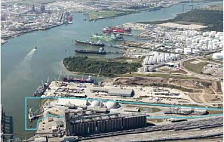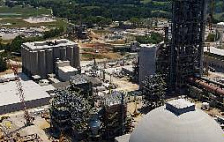Mexican cement maker Cemex SAB has joined with Danish construction-technology company COBOD to foment 3D printing of houses using an innovation the companies say will make homebuilding with robots cheaper and more accessible.
Monterrey-based CEMEX developed additives for conventional ready-mix concrete to be used in 3D printers made by COBOD. The mixture allows builders to print homes anywhere using locally available concrete.“There’s always been a lot of promise around 3D concrete printing, but it has still not materialized in a lot of places, and one of the limitations has been the high cost of the materials,” COBOD founder and General Manager Henrik Lund-Nielsen said.
Existing printing technologies use mortars, which are more cement-intensive than ready-mix, are costlier and not as widely available.
“With this solution, where material gets down to the normal price of concrete, we can utilize the full potential of 3D concrete printing,” Mr. Lund-Nielsen said.
That is an advantage for countries such as Angola, where construction startup Power2Build was the first to use the method and wants to tap the technology to help address the country’s housing deficit of some 1.8 million homes in a population of around 33 million.
“We have been trying for a couple of years now to find a way to build housing in a way that is faster and cheaper because in Africa, and Angola in particular, housing is facing a major crisis in the number of units,” Power2Build Chief Executive Ricardo Almeida said.
Although rich in natural resources such as oil and diamonds, Angola ranks among countries with the greatest levels of poverty in the world. Migration to the capital Luanda makes the housing shortage acute in and around the city.
“There is no way to build infrastructure fast enough for the influx of people coming from the interior of the country,” Mr. Almeida said.
Savings on time, labor costs and waste make the idea of 3D printing houses attractive, although industrialized use of the technologies has been limited. Texas construction technology company Icon has joined with home builder Lennar Corp. on a project to 3D-print 100 homes near Austin, Texas, the first project on such a scale in the U.S.
Cemex, one of the world’s largest building materials companies, hopes the use of its additives will increase the adoption of 3D home printing, including in markets where it doesn’t sell cement or concrete like Angola.
“What we’re seeing is that finally we’re going to make it industrialized and make it more accessible because of this important breakthrough,” said Davide Zampini, Cemex’s head of global research and development.
Power2Build has printed a small prototype social-level home of around 570 square feet, and plans to build others to cater to middle-class buyers. It is in negotiations with a number of potential customers with a view to using the technology for larger projects.
Cobod’s 3D printers use a gantry, a crane-like structure on which a suspended nozzle for pouring concrete can move in three directions. It can build up to three stories from its placement on the ground, with concrete in varying widths and thicknesses put down in layers.
“This is not rocket science, it’s very easy to use,” Mr. Almeida said. “If it can work in Angola, I do believe that it can work anywhere else in the world.”








